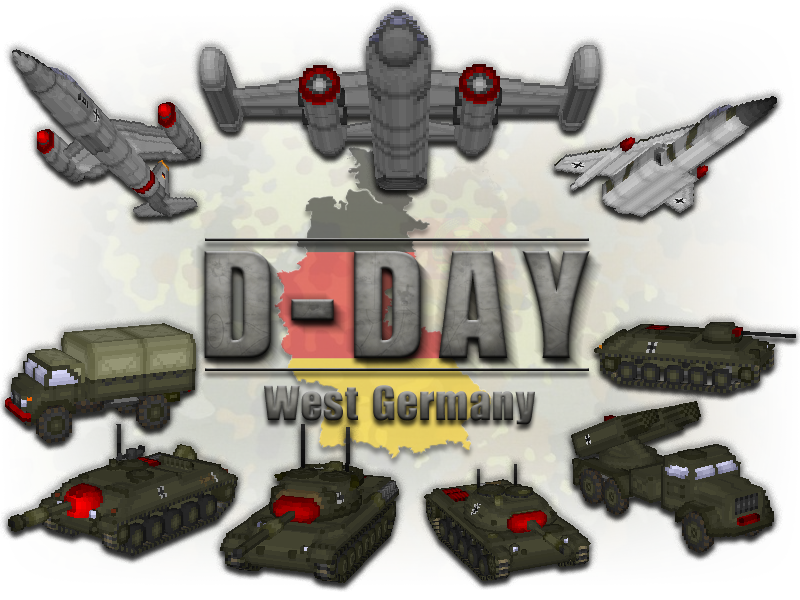
I am proud to announce the addition of West Germany to D-day as a new sub-faction. They will be playable in the Post-War time frame as an alternative to the Third Reich. While the normal Third Reich faction makes use of prototypes and paper projects designed during the closing stages of World War II in a hypothetical scenario where the war continued on. The West German faction on the other hand uses equipment developed in the 1950's and 1960's for the newly established Bundeswehr, as in our real timeline. The addition of this sub-faction lets players create Cold War scenarios gone hot as you stand with you American and British Allies to fend off a Soviet invasion of Europe. Access to the West German sub-faction is done in the same manner as the American Marines sub-faction, where after deploying your construction vehicle you are given the choice of two factions to pick from. Once chosen you will not be able to change sub-factions for the rest of the game.
Here is a more in depth look at the units available to the West German sub-faction. As usual for more information and pictures click on the unit name/animation to view their D-day Wiki page.
Development of the Unimog series of trucks started in 1946 as a truck that could also be used as an agricultural tractor allowing great versatility for farmers struggling in the post-war period. The first prototype was ready at the end of 1946 and after trials and adjustments was put into mass production at the end of 1947. In 1951 Daimler-Benz bought the Unimog company and in 1953 launched two new versions, the 401 and 402. In 1955 with the formation of the Bundeswehr Daimler-Benz designed a new 404 version of the Unimog truck specifically for military service. Production started that same year and continued until the 1980s, with various upgrades being made over the years but still keeping the same rugged and proven design of the original. The civilian version of the Unimog also continued to evolve over the years and remains in production this day.
Note: In game the Unimog 404 is used as a supply collection vehicle
The Schützenpanzer HS.30 was a infantry fighting vehicle developed by the Swiss company Hispano-Suiza for the Bundeswehr in the 1950's. It was the first armoured vehicle to be developed for Germany after World War II. Unlike other armoured personnel carriers that were in use at the time the HS.30 was fitted with a turret equipped with a 20mm auto-cannon. This gave it the ability to engage enemy infantry and unarmoured targets, making it arguably the worlds first infantry fighting vehicle. The HS.30 was authorised for production before a prototype was ready and tested. This meant that early production versions suffered from many problems, especially with the engine and transmission which were originally designed for a lighter vehicle. This rush into production along with an inordinate order of 10,000 vehicles (much more than what was required) raised some suspicions. An investigation revealed that personnel associated with the procurement process and several politicians had received in total over 50 million Deutschmarks in bribes for their support of the HS.30, creating a scandal within the German government. Eventually the early problems with the HS.30 were worked out and the order reduced with only 2,176 being built between 1958-1971.
The Flakpanzer HS.30 was an anti-aircraft system developed by Hispano-Suiza on the base of the HS.30 infantry fighting vehicle. Two different prototypes where built in the mid 1950's, one using duel 20mm guns and the other fitted with a larger turret equipped with duel 30mm cannons. Neither of the designs were put into production, further information is limited and the fate of the prototypes unknown.
The Spähpanzer Ru 251 was designed in 1960 to replace the M41A1 Walker Bulldog that the Bundeswehr had been using in the reconnaissance role. Prototypes where built in 1963/64 and underwent testing, it was however decided to cancel the project as the newly deployed Leopard 1 tank was just as if not more capable of fulfilling the intended reconnaissance role. Documents related to the development of the Ru 251 are still considered classified material by the Bundeswehr and the surviving prototype is kept in a secure storage facility, as such there is only basic information available and a few photos from during it's testing. Recently someone working at the storage facility managed to take and release several photos of of the prototype tho, marking the first time it has been seen in several decades.
In the mid 1950's the newly formed Bundeswehr put out a request for a new tank destroyer. The German companies Henschel and Hanomag jointly worked on a design together, as well as the Swiss company MOWAG. In 1960 both had finished prototypes that where given to the Bundeswehr for trials. The Henschel and Hanomag design was chosen and in 1965 was put into production as the Kanonenjagdpanzer. In the 1970's the Soviets introduced new Soviet tanks with thicker amour, this rendered the Kanonenjagdpanzer's 90mm cannon obsolete. Plans were made to refit the Kanonenjagdpanzer with the 105mm L/7 cannon to combat this new threat, instead it was decided to remove the gun a fit the Kanonenjagdpanzer with an anti-tank missile system on it's roof, this new modification was called the Raketenjagdpanzer Jaguar.
Development of the Leopard tank started in 1956 as a part of a joint project between Germany, France and Italy to create a new standard European tank (a.k.a. the Europa-Panzer). In 1960 Porsche, Rheinmetall (Germany) and AMX (France) submitted prototype tanks for evaluation. Disagreements in the design and manufacturer of the tank put a strain on the project and political changes in France further exacerbated problems. So Germany and France decided to end the partnership and continue development of their own designs independently. For Germany Porsche's design was chosen and after a second prototype and a limited run of 50 pre-production vehicles it started mass-production as the Leopard tank in 1964. The Leopard went on to also became a huge success on the export market, being bought by many European countries thus largely fulfilling it's originally intended role of being a standard European tank. While being largely replaced by the Leopard 2 in Europe the Leopard 1 is currently still in active service in several South-American countries.
The Light Artillery Rocket System or LARS was a multi-barrelled rocket launcher fitted on the back of a Magirus 6x6 truck. It could fire 36 110mm rockets which could be fitted with various warheads ranging from anti-personnel, anti-tank and parachute equipped mines. Development started in the mid 1960s and it came into service with the Bundeswehr in 1969. In the 1980s the system was upgraded by changing to a new armoured MAN 6X6 truck which is know as the LARS 2, with the original design becoming the LARS 1. In 1998 LARS was replaced in front line service with the American M270 MLRS but two hundred of them are still in reserve storage.
During the Cold War the West German Airforce expected their airfields to be a primary target in any conflict with the Soviets. To counter this they planned to adopt a mobile strategy with heavy use of new VTOL aircraft that in a time of war could be operated from makeshift runways or the autobahn. To fulfil this new strategy Heinkel (VJ 101A), Messerschmitt (VJ 101B) and Bolkow all submitted different designs for a new VTOL fighter/interceptor. Instead of making the three companies compete for the production contract the Defence Ministry encouraged them to work together, so in 1959 the three of them joined together to create the EWR (Entwicklungsring Süd) consortium. The new jointly designed VJ 101C incorporated the best features from the original concepts, with Heinkel's wing mounted engine pods and Messerschmitt's fuselage lift fan being combined to provide the aircraft's VTOL capability.
In early 1960 a rudimentary test rig was built to test the feasibility of the VTOL engines, a skeletal prototype was then built and in May 1961 underwent testing on a telescopic column. Work continued on improving this prototype and in March 1962 it was able to fly freely on its own. With the success of these tests a full prototype (X-1) was built and flew for the first time on April 10th 1963 and the first transition from vertical to horizontal flight was achieved on September 20th 1963. On September 14 1964 the X-1 prototype crashed and was destroyed during take-off, it was later found that a roll rate gyro had been installed backwards causing the autopilot to malfunction. A second prototype (X-2) completed in mid 1965 and along with fixes to the autopilot it also featured newer engines fitted with afterburners, it achieved its first VTOL flight on October 22th 1965. Testing of the X-2 prototype continued for several more years and plans were made for construction a larger and more advance EWR VJ 101D design, however changes in strategic requirement meant that interest in the EWR VJ 101 diminished and in 1968 the project was cancelled. The X-2 prototype survives to this day and can be found in the Deutsches Museum in Munich.
Following the cancellation of the VJ 101 EWR continued work on several conceptual designs (The AVS project in partnership with Boeing and the EWR A 400 STOL Design Study), these slowly evolved the original VJ 101 design and culminated into the Panavia Tornado.
The Fw-860 was an unique VTOL aircraft designed in partnership between Focke Wulf and the French company SNECMA, the French version being known as the AP 519. While most VTOL design used lift fans or rotating engines to achieve vertical flight the Fw-860 instead would take off and land on it's tail, in a similar fashion to a rocket. This tail-sitting method while requiring complex landing gear had advantages of needing less complex VTOL engines, saving wight and space within the aircraft making it possible to produce a more compact design. A major problem with this design though is that the pilot's view is restricted to looking up vertically at the sky when taking-off/landing, to solve this the nose section of the Fw-860 would be able to rotate 90 degrees giving the pilot an unrestricted horizontal view. This unusual aircraft never left the concept stage and work instead moved to more traditional VTOL designs.
The Dornier Do-31 was a VTOL transport aircraft designed to be used along with the EWR VJ 101 VTOL fighter plane as part of West Germany's mobile defense strategy. Development of the Do-31 started in 1959 with a test rig being completed in 1962 which was used for several years to work out the problems with this large and ambitious design. Three different prototypes were then completed during 1967. The first prototype (Do-31E1) was only fitted with Bristol Pegasus engines for testing the standard horizontal operations and flew for the first time on February 10th 1967. The second prototype (Do-31E2) was used for static ground tests and never flew. The third and final prototype (Do-31E3) was fitted with both Bristol Pegasus engines and the Rolls-Royce RB162 lift engines and was capable of full VTOL operations, its first flight was during July 1967 and the first vertical take-off was achieved on November 22nd 1967. During the 1969 Paris air show the Do-31E3 gave a demonstration, during which it set world records for speed, distance, altitude and speed and duration over a course. The Do-31 remains the only jet powered VTOL transport aircraft ever built and as such these records have yet to be challenged. Unfortunately for this unique aircraft changes in strategy and the high cost of the project lead to its cancellation in 1970. Dornier also put forward a proposal for a larger civilian passenger version called the Do-231 but couldn't find any airlines interested in purchasing it so it failed to leave the drawing board. Two of the prototypes still exist today, Do-31E1 can be found displayed at the Dornier Museum in Friederichshafen and the Do-31E3 prototype is located within the Flugwerft Schleissheim aviation museum in Oberschleißheim. The second prototype Do-31E2 was scrapped soon after the project was cancelled.
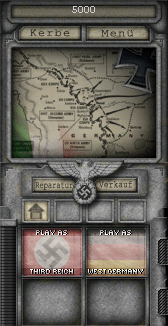
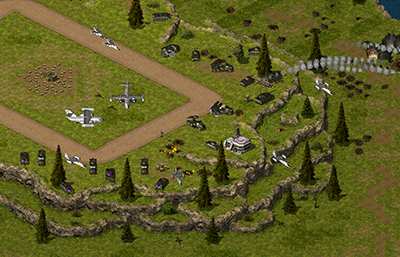
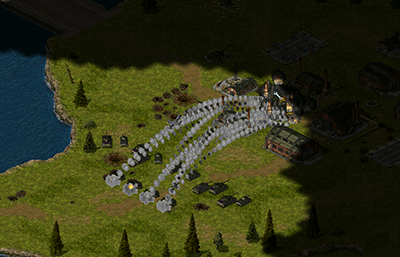
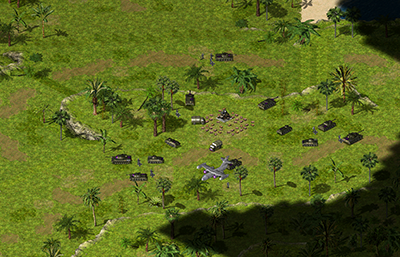
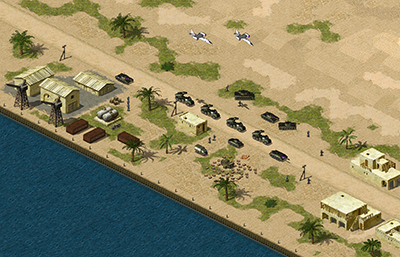
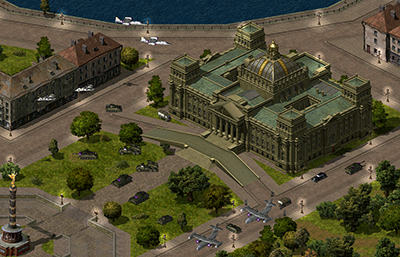
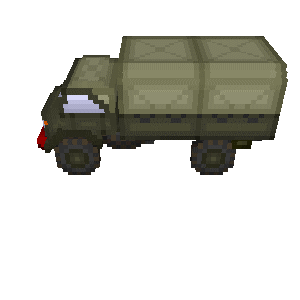
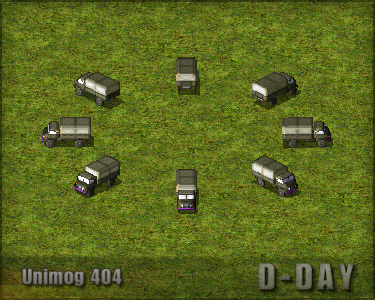

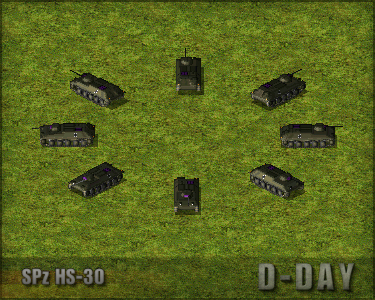
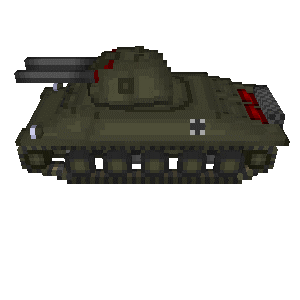
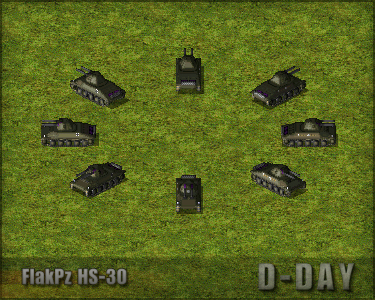
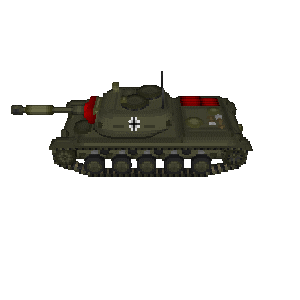
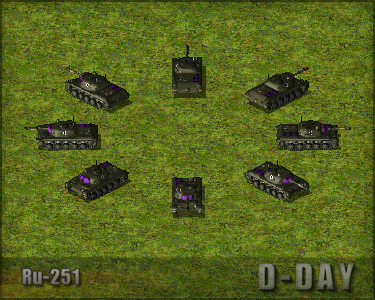
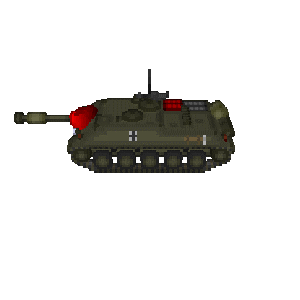
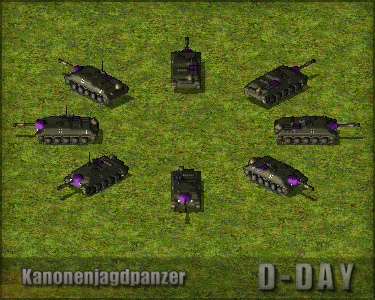
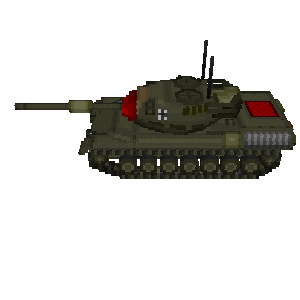
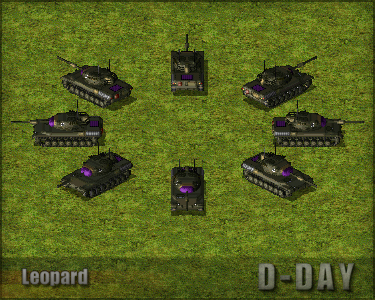
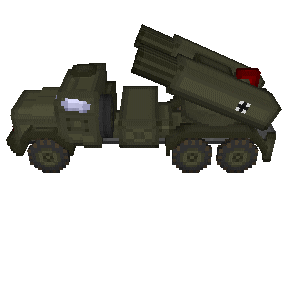
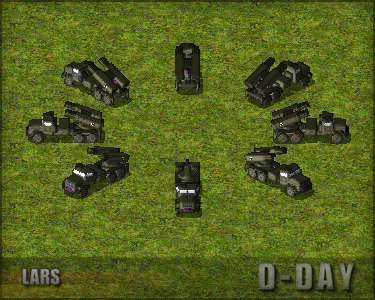
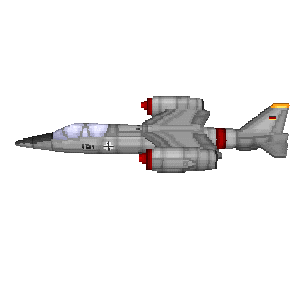
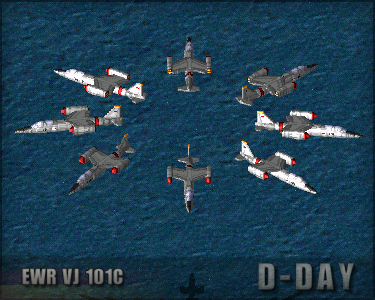
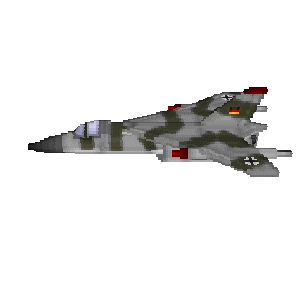
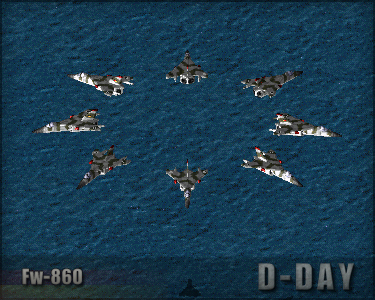
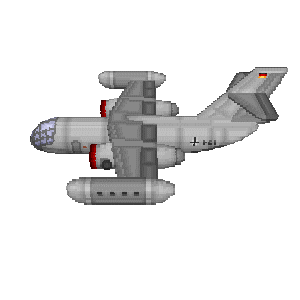
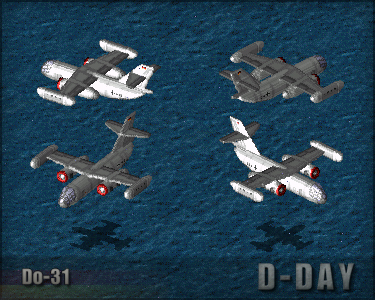




Simply amazing!
I know it would be historically inaccurate but now I'm curious about what a Me-262 in West Germany service would look like... Anyhow, this looks amazing and I can't wait to play this!
Bundeswehr only starts existing in 1955, and their Air Force in 1956. For reference, the Korean war ended in 1953, so you can pretty easily say the 262 would have been worse than worthless.
Unless you instead think up some Unthinkable-type scenario, where the Allies rapidly rearm their half of Germany for war with the Soviet Union in 1945 for whatever reason, in which case, the plane probably isn't worth the effort in face of far more cost-effective Allied jets being readily available.
(And probably just plain overall better, but I'd have to check.)
And then the Soviets eventually take a mighty reaming courtesy of US and British air fleets, so all that's left to do is strafing and bombing, which definitely isn't worth the pricetag that comes with the plane.
That I know, I've studied quite a bit into German history and the Second World War. What I had in mind mostly was a Me-262 with its flaws ironed out, in Bundeswehr colors and armed with more "modern" weaponry. To be honest, it amazes how the Germans managed to mass produce jet fighters and built a few jet bombers in such a short period when their industries and infrastructures were being bombed.
Fun fact, Nazi Germany actually had Surface to Air Missiles. Imagine if Germany had developed Panther tanks, MG-42s, STG-44s, SAMs, Cruise missiles and ballistic missiles in 1939, if those weapons were introduced or developed that early, by 1945, Britain would be starved after a successful U-Boat campaign, Moscow would be taken and German jets would dominate the skies...a majestic sight but the SS and Gestapo scares me.
At that point, you might as well have them riding flying pink unicorns into battle, though.
The tanks would break down and strain their already notorious logistics chain, while sacrificing general versatility for stationary tank-busting, their missiles carried a pathetic warhead a shorter range than contemporary bombers, and couldn't hit a target smaller than a city, and no, there was nothing that could be done about that, with each V2 needing 30 tonnes of potatoes to fly, which would be ******* idiotic even if their farmers were at home and there wasn't famine everywhere.
Just because you're dragging your immature prototypes into battle before they're ready because you're getting the ever-loving **** beat out of you doesn't mean they were ready for deployment.
There are absolutely massive differences in entering a city, and seizing it. See: Stalingrad.
By the time they crawl out the eastern end of Moscow, the last of their experienced combat troops are dead or crippled, and everything of strategic value has long since been evacuated.
A "Successful U-Boat campaign," by itself is enough cans of worms to feed a front, especially since the US isn't just going to sit idly by for it.
Eh, hypothetical scenarios are fun to work with. The odds of N.Germany actually winning is slim, even if they took Britain. Logistics will always be a problem and with Hitler in charge, things will lead downhill. The USSR deployed Scorched Earth tactics,could move entire factories and they are used to the General Winter. Except when they fought the Finnish, they lacked the equipment and soldiers skilled enough to navigate the rough terrain.
If Stalin didn't purge the Red Army's leadership, they could've held against the Blitzkrieg early on in the war... but really, a lot of nations during WW2 pushed ahead technological advances and German rocket research helped put Neil Armstrong on the moon. Take the Panther tank for example though, it was ahead of its time and prone to breakdowns but it was a effective design. If the engine problems and complexity of repairs were solved, they could've become far more effective.
Call me bias if you like but German engineering and research fascinates me. If someone could look past the genocides and massacres conducted by Stalin's regime, I can do the same with Hitler's regime. I'm against the Nazi ideals but it was a time of technological advances which was paid for in blood. When people say Germany, a lot of people think of the Nazis and SS but when I hear Germany, I hear advancement. Looking past their conventional weaponry during WW2, they possessed a chemical arsenal which surpasses those of the USSR, France, Commonwealth and United States.
In a sense, I'm admittedly biased but it's frustrating when I look back at history and realized my dislike for Germany was unfair. Laconia incident, MV Wilhelm Gustloff sinking, the Red Army pillaging and raping everything in their path (I know Germany and many countries did the same but Stalin justified it and supported it), even the United States Marine Corps acted just as barbaric as the Japanese in the Pacific. Marines would collect ears, teeth or skulls of deceased Japanese soldiers (at least they aren't cannibals like some Imperial Japanese forces). Truth is, there's never a Good or Evil in war... just the lesser of two evils principle.
Img04.deviantart.net
Sure, but there's hypothetical, and then there's "If only the Mongols had aircraft carriers!" type scenarios that simply don't fly because of how far-reaching everything relating to them is.
Helped, maybe, but they were fairly far away from instrumental. The US still had an extensive industrial base, engineers that could make it happen, and testing going on.
Let's leave the politics, both external and internal alone, and just go for the Panther example:
It's a request for a 30 tonne tank, which is the most of what its drive train is designed to handle, while actually weighing 45, leaving it second to both Tigers and, barely, the IS series tanks.
That thing was never going to be reliable. Not with that much weight on it. And without designing a whole new tank, there's just no way to actually make it decently serviceable either. Especially not as befits a piece of military equipment.
Unless you dropped a third of its weight, I guess...for a start. There's just nothing particularly remarkable about the tank when you get to it. Except maybe that they mass produced them in their state.
Personally, I think swapping out the armament for something with a heftier calibre and a more balanced gun by the third rework of the 75mm projectile and shell would have done them good as well.
...but so would have focusing more on trucks, or just plain not trying to **** off almost every major and superpower on the planet.
And as for the chemical arsenal...it's pretty worthless when using it would mean effectively forfeiting their logistics. As if that needed any help whatsoever.
And 'Jewish Physics' were just around the corner. Cheaper than anything Wernher was cooking at the time, too.
The Holocaust was one of many reasons why Nazi Germany lost. Many scientists and researchers were killed off in the concentration camps and death camps.
And about the Panther, it was heavy but it was also the closest to a modern MBT until the Centurion and Pershing came out, sloped armor, a capable gun and speed. Going off on what I'm reading from a book about WW2 vehicles and weaponry, the Panther was heavy but maneuverable. They made their debut during the Battle of Kursk with little success since they were suffering from teething problems,gear boxes and running gear failing but after most of those problems were rectified, it became one of the best tanks of World War II to quote the book. I'm also comparing it to much more modern tanks like the M48 Patton and Leopard 2 series of tanks which made their debut in 1979.The Patton outclass the Panther but I don't think it's the best example since I'm still behind on American military history but the Leopard 2 and Panther share similar abilities, they are maneuverable on rough terrain. Other than engine problems, weak turret traversing gear and thin side and rear armor, it was still a pretty decent tank. The Tiger series were more of a paper tiger. Allied tank crew often called whatever tank that knocked out their tanks Tigers. They had powerful 8.8 cm KwK-36 L/56 but they broke down a lot and less maneuverable.
But then, you look at the drones Germany managed to field years before drone warfare even became a thing. Guided missiles, Borgward IV, Springer and Goliath demolition drones... fun fact! The Goliath was based on an ammo carrier drone design but was much smaller!
Sorry in advance if there's any typo, I just woke up
Eeeh, don't have the right, when I can't be arsed half the time myself.
The war was pretty much lost the moment it was decided that the Soviet Union really ought to be invaded, so you can pin it as early as 1923.
There's really just no better way to get a bunch of angry Slavs to drop their grievances than a band of Reiching Germans yelling about racial purity.
Frankly, while there's tank historians that go with that position on the Panther, I'm personally skittish on the matter, between its reduced HE performance, continued Pz.IV production, and its mechanical issues, which they really didn't get to the bottom of at all.
The French used them after the war, until about 1949, and they never managed to get their final drives to last past 150 kilometers without needing refurbishing, on a tank with at least 200 in its "operational range."
The British also had two Panthers and Jadgpanthers built for trials after the war, and, with a fifth captured (Berge)Panther, came to the conclusion that...they couldn't finish limited trials because they ran out of tanks.
One had its brakes fail snapping a torsion bar into the gearbox, the other four caught fire and burnt down.
Tankandafvnews.com
The tank had its teething problems, sure, exacerbated by being rushed into service without proper trials, but they also had serious design flaws as combat vehicles. The turret was top-heavy, the gun was completely imbalanced, owing to its length, the gunner's optics are horribly limited, and routine servicing often meant taking half the tank apart.
As for comparisons, I think the closest US equivalent is the M26 Pershing. Less muzzle velocity, but more balanced (even stabilized!) gun, HE capacity, and there's little case to claim it as a first generation Main Battle Tank.
But as soon as you start talking about actual post-war universal tanks, the Panther
Fiddling with radio control was nothing new: The Soviets were at it for the entire preceding decade actually using them in Finland, and then...not much else.
Brits, I think also did some work with their infantry radio stations, with no practical application.
Americans had a little project involving remotely guided aircraft jam-packed with explosives, but most it did was kill a Kennedy, however, they were quite prolific in guided bombs, putting together both a radar-guided and a fire-and-forget weapon before the war ended! The former actually sank an escort-ship, though post-war testing found it easy to jam, and the latter was too slow for the war.
They also returned to remote-controlled tanks the first, trying out cameras in an M48 Patton in 1956. It lagged, didn't see much, and they got it stuck a lot.
It may have also bulldozed a wall.
Pretty much all of these were failures. Your examples too, by the way. Just because the technology is there, does not mean it's robust enough to work on a battlefield.
Soviet tanks couldn't do much, American planes and bombs were shot down or plain fell out of the sky in the wrong place, you could take out a Goliath with some brass and a well applied pair of cable cutters, and their missiles were a stillbirth, with the effort made, and the product not delivered. Or worse, made with more casualties on the continent than the island.
Yeah, further replies are probably gonna be personal instead. These are getting...long.
Also, for the love of Kruppstahl, people, if you're gonna disseminate downvotes, at least have the spine to back them out with some facts of your own, will ya!?
Can't be just me doing the work.
I see your point and I agree, this is also definitely getting dragged out and about the M48 in 1956, it reminded me of an incident in the same year that honestly made me laugh when I heard about it. Battle of Palmdale it was called, an F6F-5K drone went rogue and was headed towards Los Angeles, it was unarmed but two "modern" USAF jets were sent to shoot it down before it crashes into the city. The manned jets ended up doing more damage than the drone could ever do. Woodland set ablaze, power lines cut and etc.
Anyhow, back on topic... the technology definitely was there and like you said, they were not robust enough to work like intended. But in a way, it did opened a window for the future of development. The USSR, United States and UK, they knew it was possible and could work if perfected.
Not justifying the World Wars but they sped up technological advances, they might be full of flaws during their time on the battlefield but after the war, it led to more developments that eventually led to success. If I remembered correctly, the French had the more "Modern" tank during the Second World War but their numbers were few.
Iiiiintahdasting. Now all we need is an alternate-history Weimar Republic for...whatever reason.
Lol
I'm curious to what other subfactions we'll get for factions, including interwar period and the post war periods. I presume we'll also get an East German subfaction as well?
East Germany like all the Warsaw Pact countries used standard Soviet equipment. So they wouldn't be any difference between a East Germany sub-faction & the current Post-War Soviet side.
Italy might get an alternative Post-War sub-faction in the future, research is still on going tho and I might not be able to find enough to equipment to make a new sub-faction feasible.
East Germany did use Soviet tanks and aircraft at first but they did eventually branch out a bit and develop some of their own equipment. More interestingly though they had their own doctrine which was completely different from that of the Soviet Union. They had far higher training standards for their Panzergrenadier units than the Soviets did. An East German faction would have better infantry units than the soviets while having T34-85 and T55 tanks along with elite motor rifle formations. Their infantry would take the primary role supported by tanks and artillery. Early East German units were equipped with STG-44 rifles and N. German surplus camouflage until they started manufacturing their own.
Awesome work as usual :)
Shouldn't the factions be choosable at the pre-game screen? The only advantage for them being choosable in-game like this is their opponent won't know which one they pick which can be pretty bad as it would make planning for timings or compositions in the early-game virtually impossible which will feel very cheap to players.
Unfortunately its not possible to add or disable sides for specific time-frames, so adding it as an in-game option was the only choice.
Just say MPinis can't be used to override a side's stats
Would this work with the Origin version of Red Alert 2? I haven't tried modding it yet, but I've had trouble modding Origin games in the past due to its restrictive…ness.
I have the Origin version and it runs fine, though some launchers will attempt to go into the wrong directory at times.
Okay. Thanks!
Hands off to the best YR mod out there